I did it again :) I had the opportunity to help in a bee apiary. As I have "young eyes" and good vision, I was asked to help look for the queen bee, because something is wrong in the apiary. It turned out there was no queen, at least we didn't find one, and there were signs that the bees had no queen.
Znowu to zrobiłem :) Miałem okazję pomagać w pasiece pszczelej. Jako że mam "młode oczy" i dobrze widzę zostałem poproszony o pomoc w poszukiwaniu królowej pszczół, bo coś w pasiece jest nie tak. Okazało się że nie ma królowej, przynajmniej jej nie znaleźliśmy i były oznaki wskazujące, że pszczoły nie mają matki.
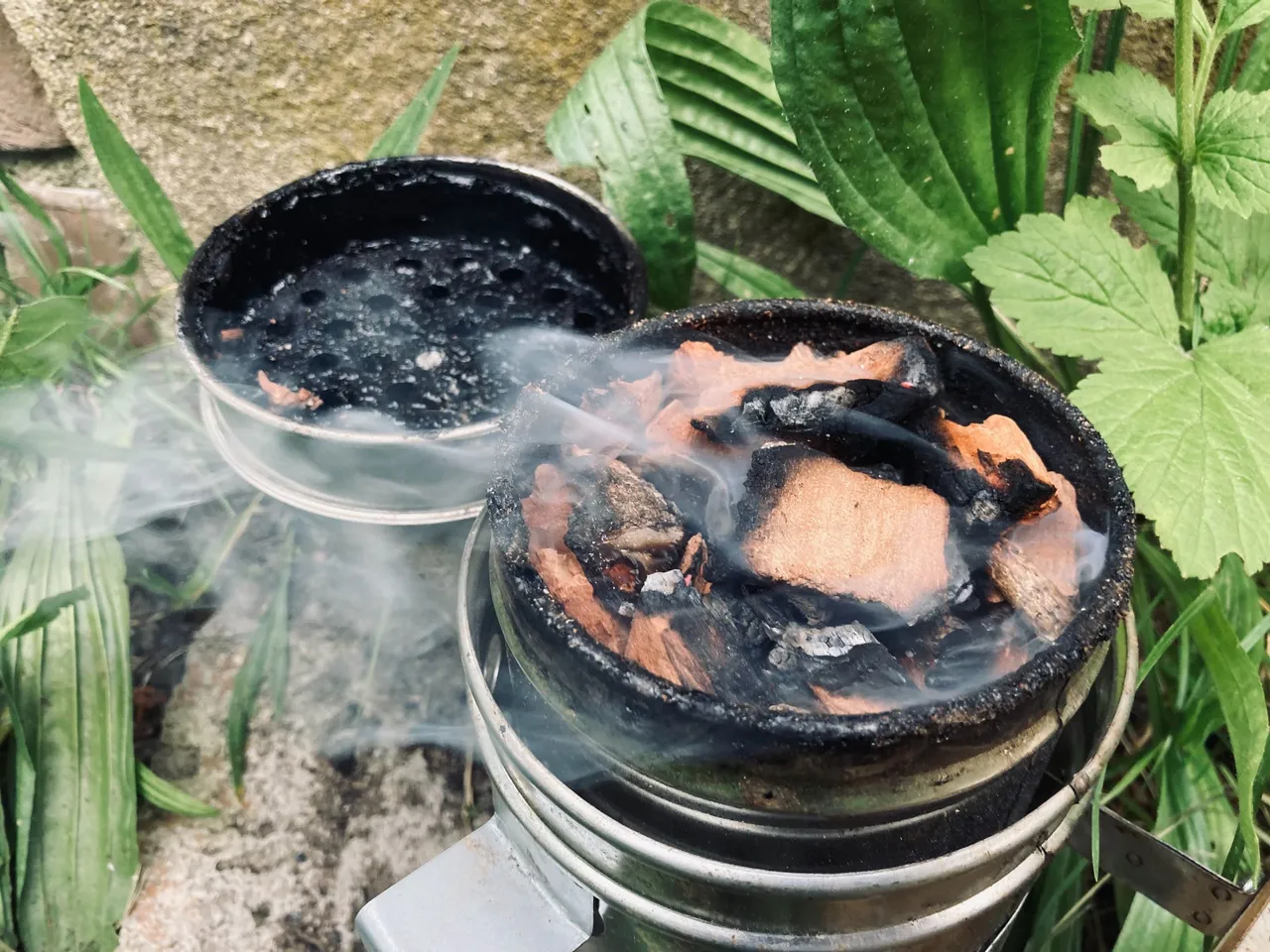
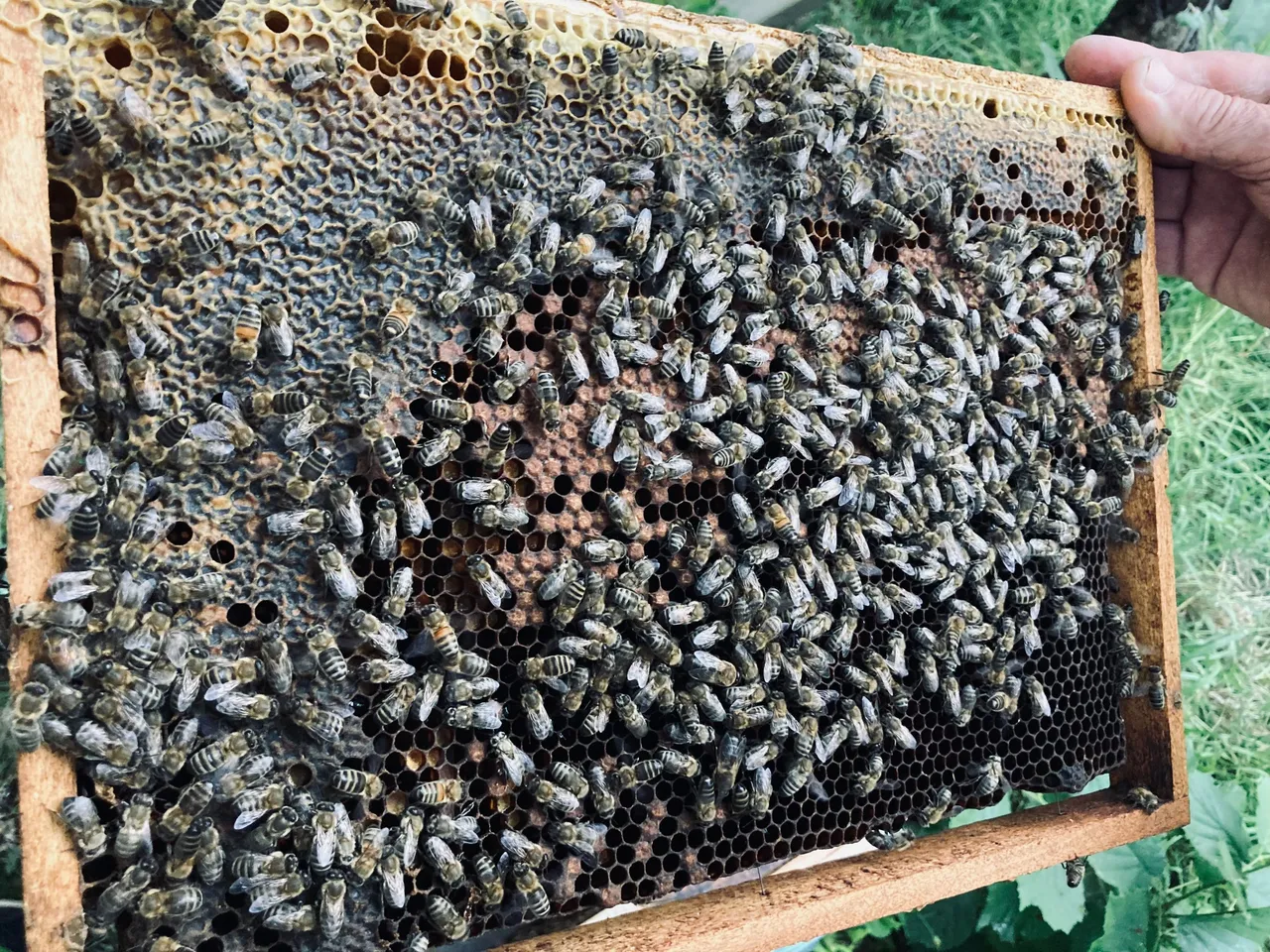
Bees are so fascinating. I learned that the queen bee is the most important, but she has very little say in the hive. The queen has quite a boring life, but she lives a very long time, the longest of the bees, she can live up to 5/6 years. I said he has a boring life because he only flies out of the hive once to meet the drones and obtain genetic material for his offspring :D Later he stays in the hive all the time and only lays eggs in frame cells, each egg is the same. Other bees decide what a bee will be like by feeding it appropriately. It could be a bee, a drone, or even another queen.
Pszczoły są tak fascynujące. Dowiedziałem się, że królowa pszczół jest najważniejsza, ale ona w ulu ma bardzo mało do gadania. Królowa ma dość nudne życie, ale żyje bardzo długo, najdłużej z pszczół, może żyć nawet 5/6 lat. Mówiłem, że ma nudne życie, ponieważ tylko raz wylatuje z ula, żeby się spotkać z trutniami i otrzymać dla potomnych materiał genetyczny :D Później cały czas jest w ulu i tylko składa jajeczka w komórki ramek, każde jajo jest takie same. O tym jaka będzie pszczoła decydują inne pszczoły odpowiednio ją karmiąc. Może to być pszczoła, truteń, a nawet inna królowa.
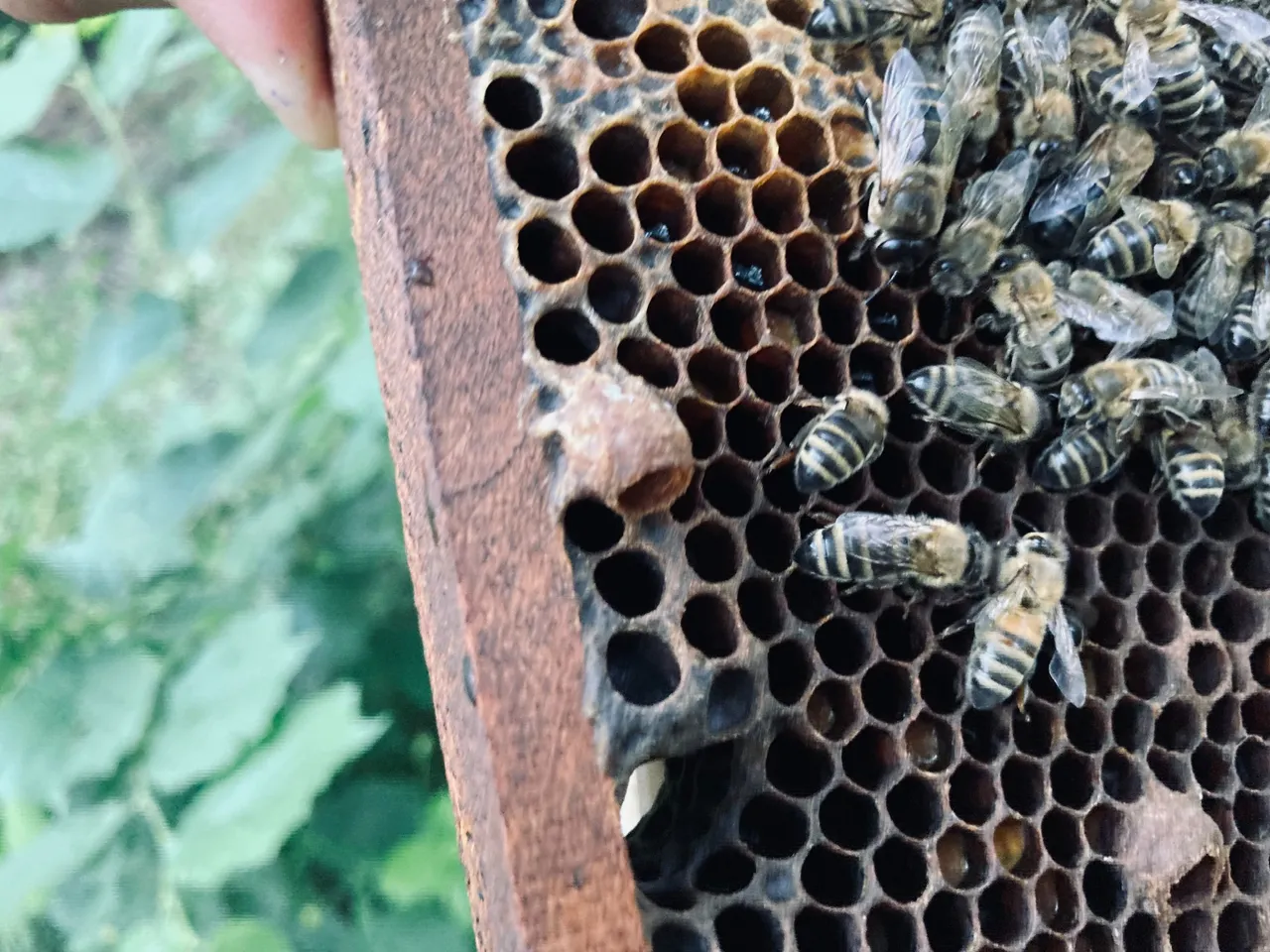
It turned out that there was no queen in the hive, the bees noticed it (they felt the presence of the mother), and within a few hours they started working. They found the cells where the eggs were and decided to build a queen cell. The queen bed is the place where the queen is formed, these two larger protruding points on the frame. They provide such a larva with appropriate food, which is royal jelly. Such nutrition determines the formation of a new queen.
Okazało się, że w ulu nie ma królowej, pszczoły to zauważyły (czują obecność matki), w ciągu kilku godzin zaczynają działać. Znalazły komórki gdzie są jajeczka i postanowiły zbudować matecznik. Matecznik to takie miejsce gdzie powstaje królowa, te dwa większe wystające punkty na ramce. Taką larwę zaopatrują w odpowiedni pokarm, jest to mleczko pszczele. Takie odżywianie decyduje o tym że powstanie nowa królowa.

The moment when there is no queen is a big loss for the bee family and a great loss for the beekeeper, especially in the season when bees can collect nectar. It takes about 17 days for the queen to emerge from the egg, and the time until she can lay eggs in the cells herself is an additional week. A careful beekeeper does not wait that long.
Moment kiedy nie ma królowej to duża strata dla rodziny pszczelej, oraz wielka strata dla pszczelarza, szczególnie w sezonie kiedy pszczoły mogą zbierać nektar. Pojawienie się królowej od jajeczka trwa jakieś 17 dni, oraz czas kiedy będzie mogła sama składać jaja w komórkach to dodatkowy tydzień. Uważny pszczelarz nie czeka tyle czasu.
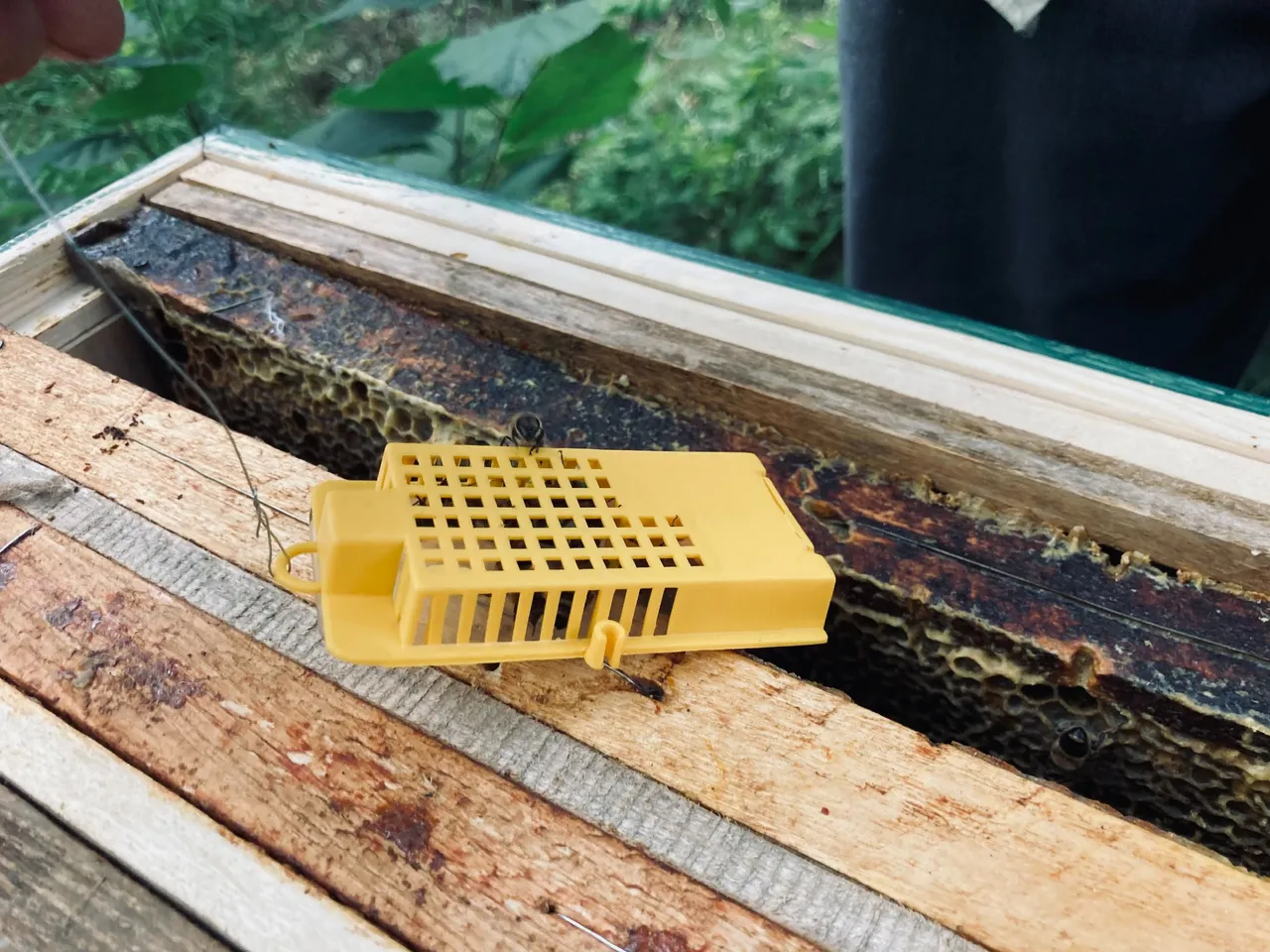
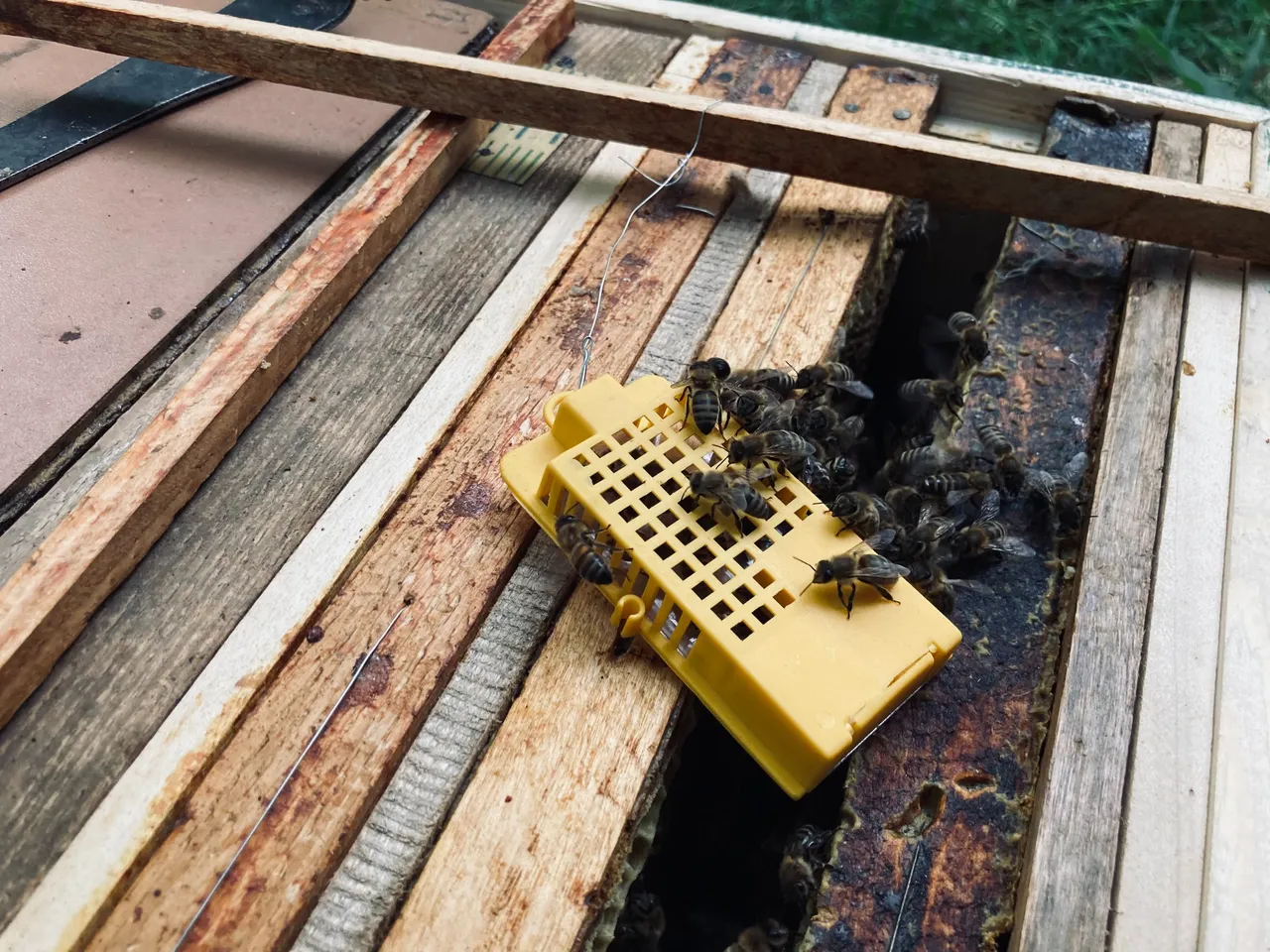
It turns out that there are apiaries that, in addition to honey, also supply queen bees to other apiaries. What you see in the yellow box is a young mother bee and several bees that are supposed to feed and take care of her, after all, she is the queen :) The mother bee has a small green dot that provides some information (what year it is from, what week, or other information ), but most importantly, it is easy to find in the hive, it stands out from other bees. The queen bee looks similar to bees, but is much longer and slightly thicker.
Okazuje się, że są pasieki które oprócz miodu zajmują się również dostarczaniem matek pszczelich na innych pasiek. To co widzicie w żółtym pudełku to młoda matka pszczela oraz kilka pszczół które mają za zadanie ją karmić oraz pielęgnować, w końcu to królowa :) Matka pszczela ma mały zielony punkcik który przekazuje kilka informacji (z jakiego jest roku, który tydzeń, lub inne informacje), ale co najważniejsze łatwo ją znaleźć w ulu, wyróżnia się od innych pszczół. Matka pszczela wygląda podobnie jak pszczoły, ale jest znacznie dłuższa i nieco grubsza.
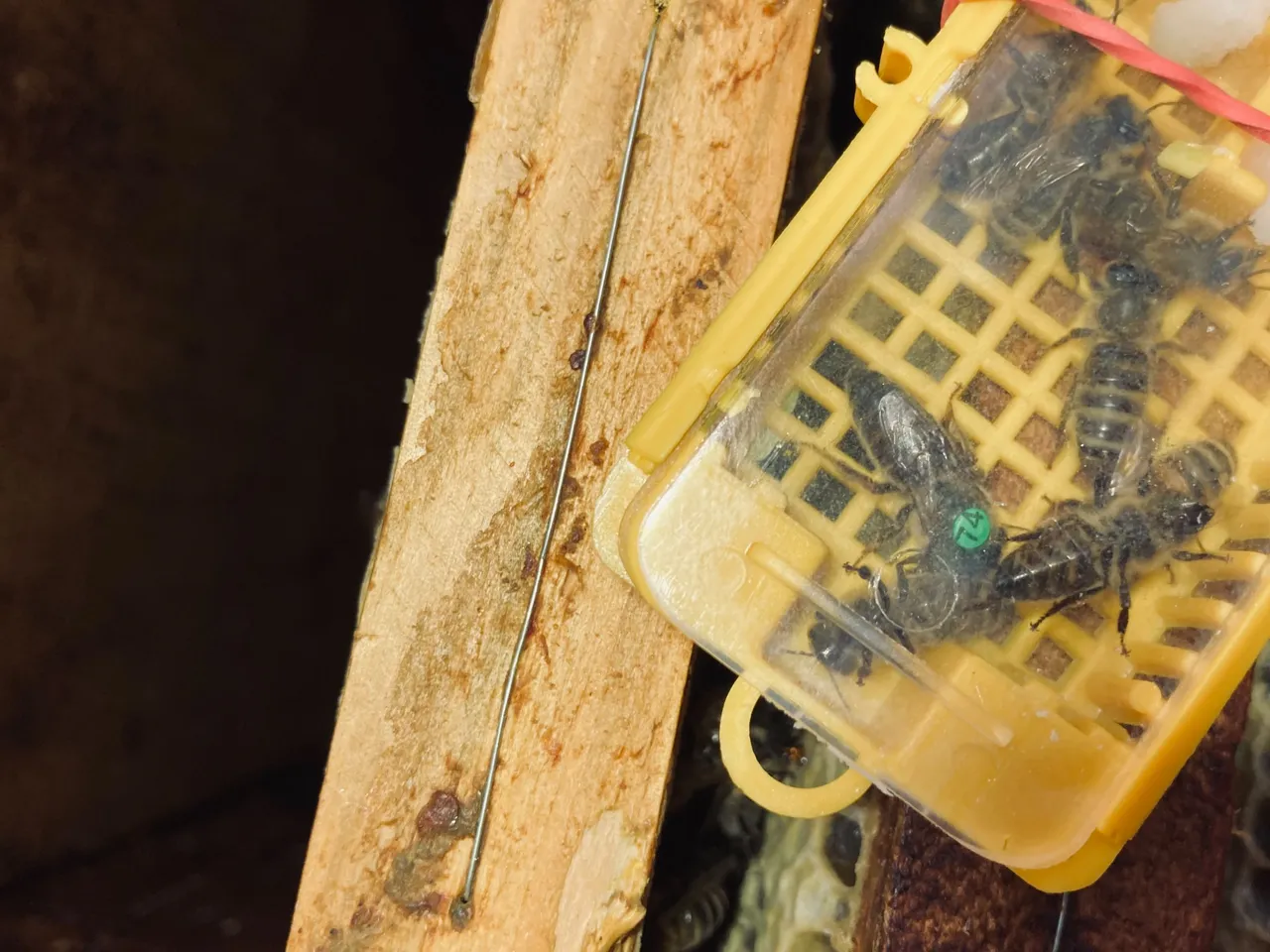
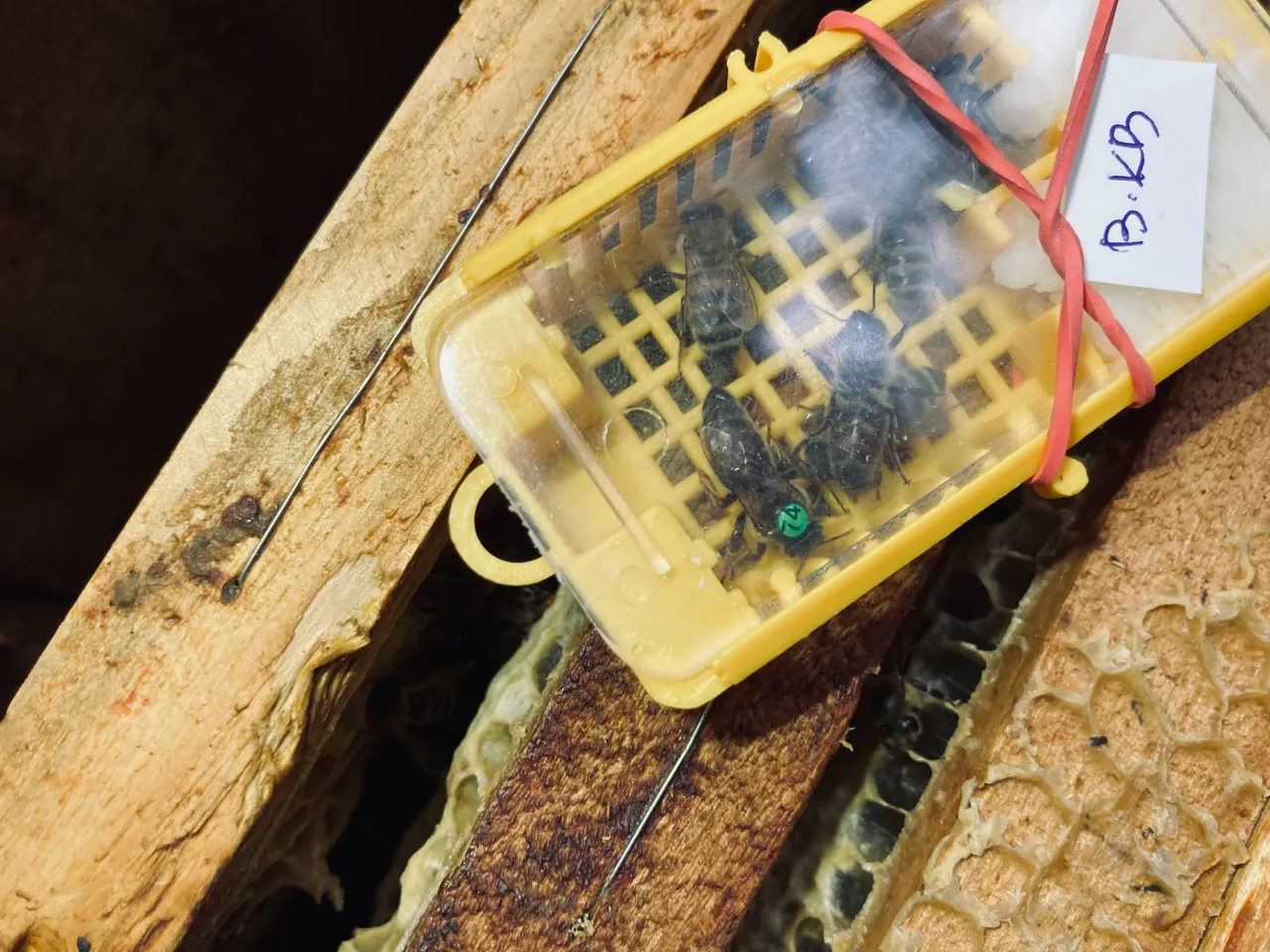 | 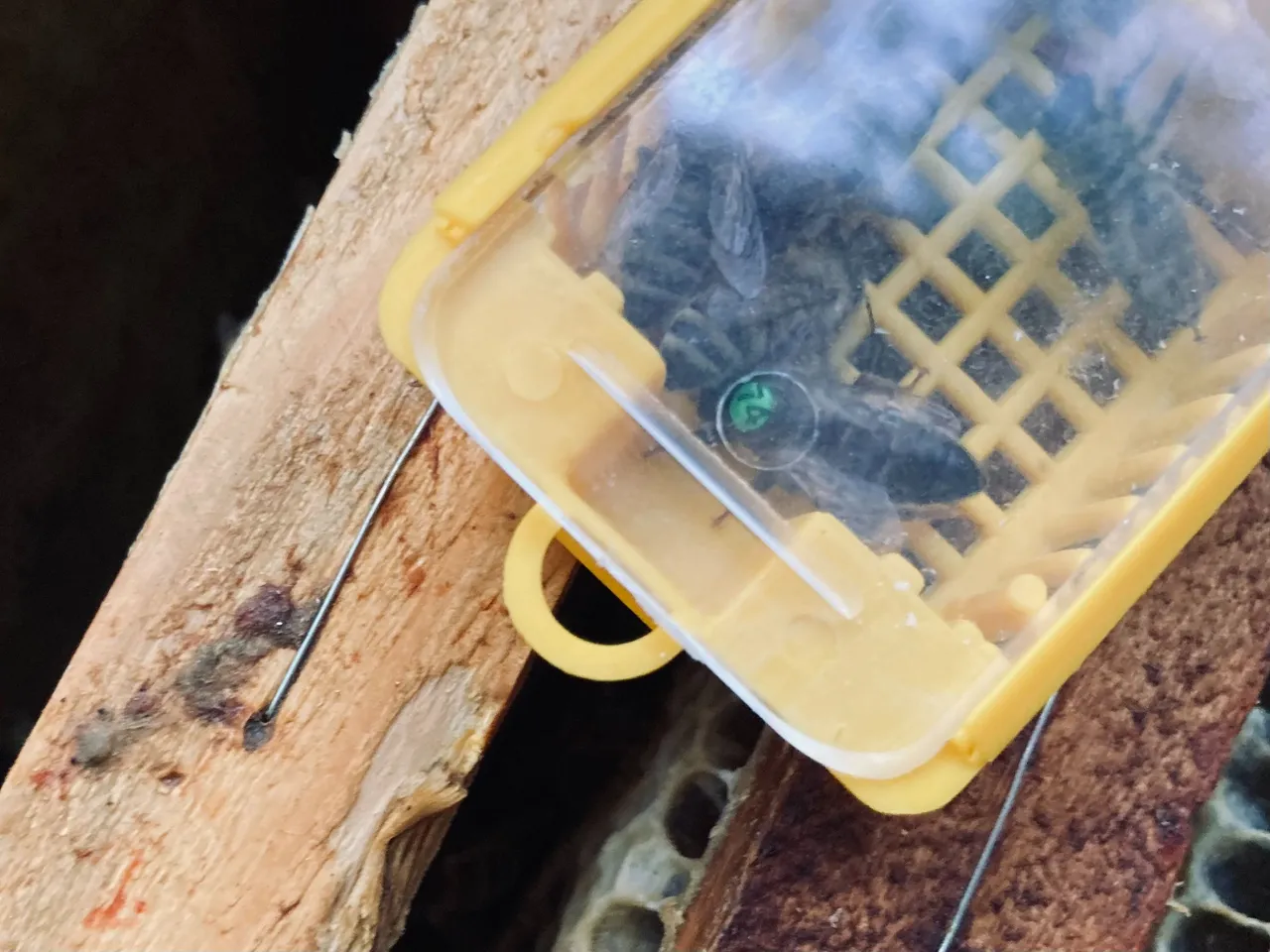 |
|---|
Now we are testing how the bees react to such a queen. If they are calm, interested and friendly (they do not sting or want to kill her with heat - because they can make a bee circle to increase the temperature), the queen will stay in the hive. But first, adaptation occurs - a box with a closed queen is placed in the hive, but the queen cannot come out. The exit is sealed with bee cake (a special sugar paste), the bees eat it and release the queen. This may take several hours or even days. This adaptation allows the bees to get used to the presence of the new queen.
Teraz następują testy jak pszczoły reagują na taką królową. Jeżeli są spokojne, zainteresowane i przyjaźnie nastawione (nie żądlą, ani nie chcą jej zabić ciepłem - bo mogą zrobić kłąb pszczeli żeby zwiększyć temperaturę) to królowa zostanie w ulu. Najpierw jednak następuje adaptacja - pudełko z zamkniętą królową jest umieszczane w ulu, ale królowa nie może wyjść. Wyjście jest zaklejone ciastem pszczelim (specjalna masa cukrowa), pszczoły ją zjadają i uwalniają królową. Może to trwać kilka godzin lub nawet dni. Taka adaptacja pozwala pszczołom przyzwyczaić się do obecności nowej królowej.
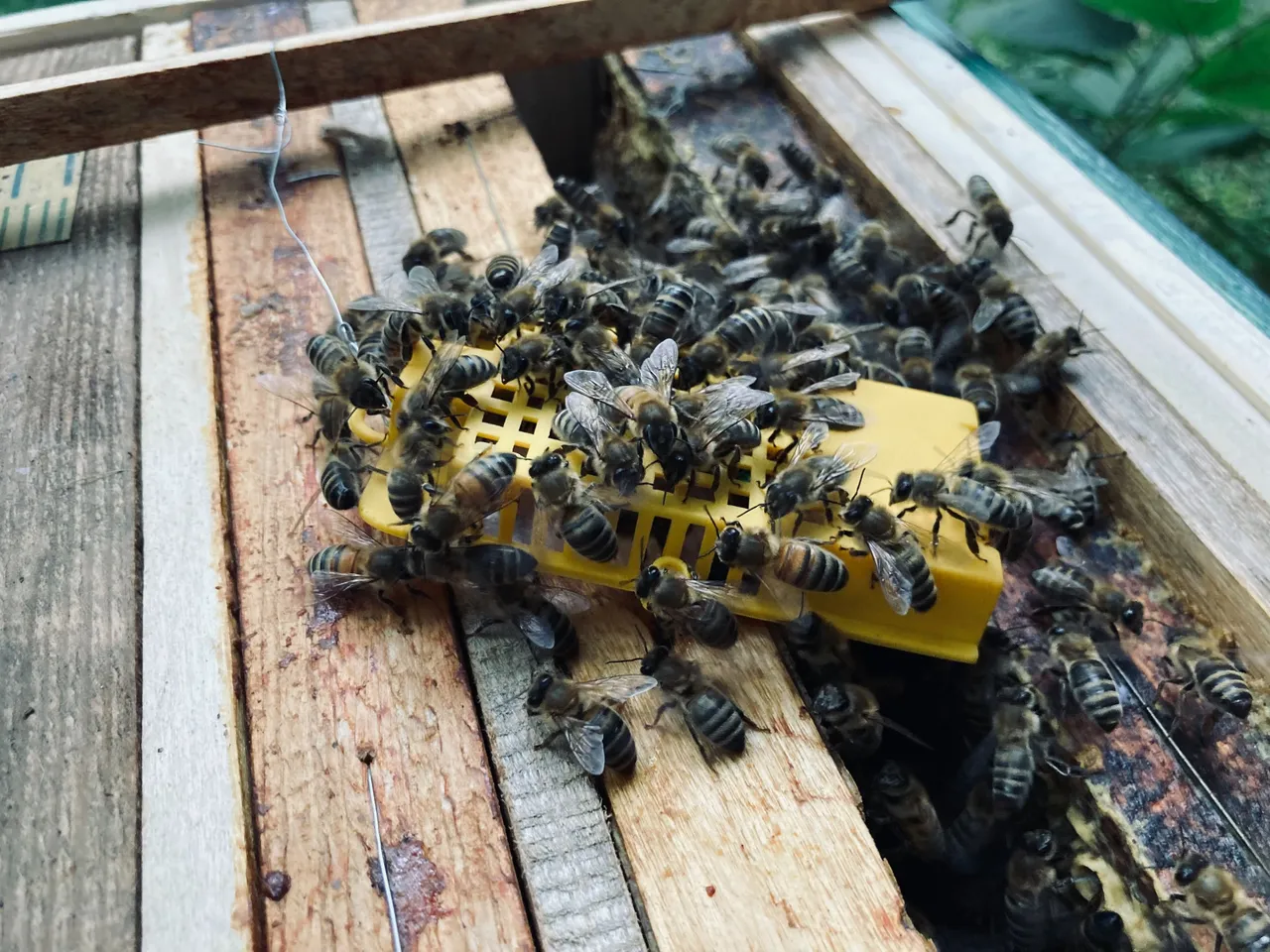

After the queen is subjected to this condition, you do not look into the hive for a few days, then you need to check whether the mother is alive, whether there are new eggs and whether the bee colony will develop properly and produce honey. Most often, bees treat such a queen with love and the hive develops in good condition, the new mother broods many new young bees :)
Po takim poddaniu matki przez kilka dni się nie zagląda do ula, później trzeba sprawdzić czy matka żyje, czy są nowe jajeczka i czy ta pszczela kolonia nalej się będzie rozwijać i dawać miód. Najczęściej pszczoły taką królową traktują z miłością i ul się rozwija w dobrej kondycji, nowa matka czerwi dużo nowych młodych pszczółek :)
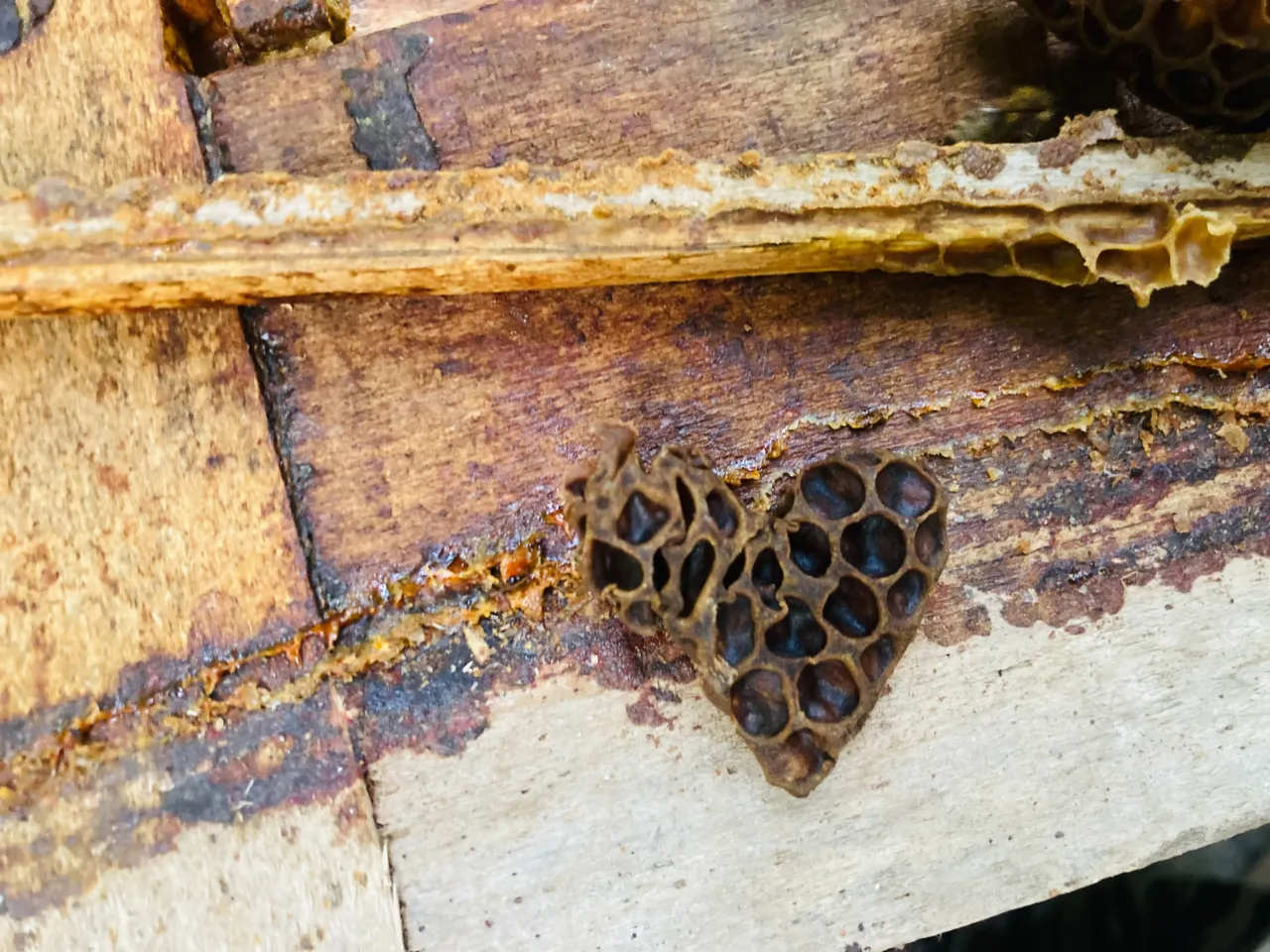
Others in this series:
🐝 Hives from Poland #4 Zacisze z ulami wielkopolskimi
🐝 Hives from Poland #5 Searching for bee brood in the hive
🐝 Searching for bee brood in the hive 🐝 | Hives from Poland #6
